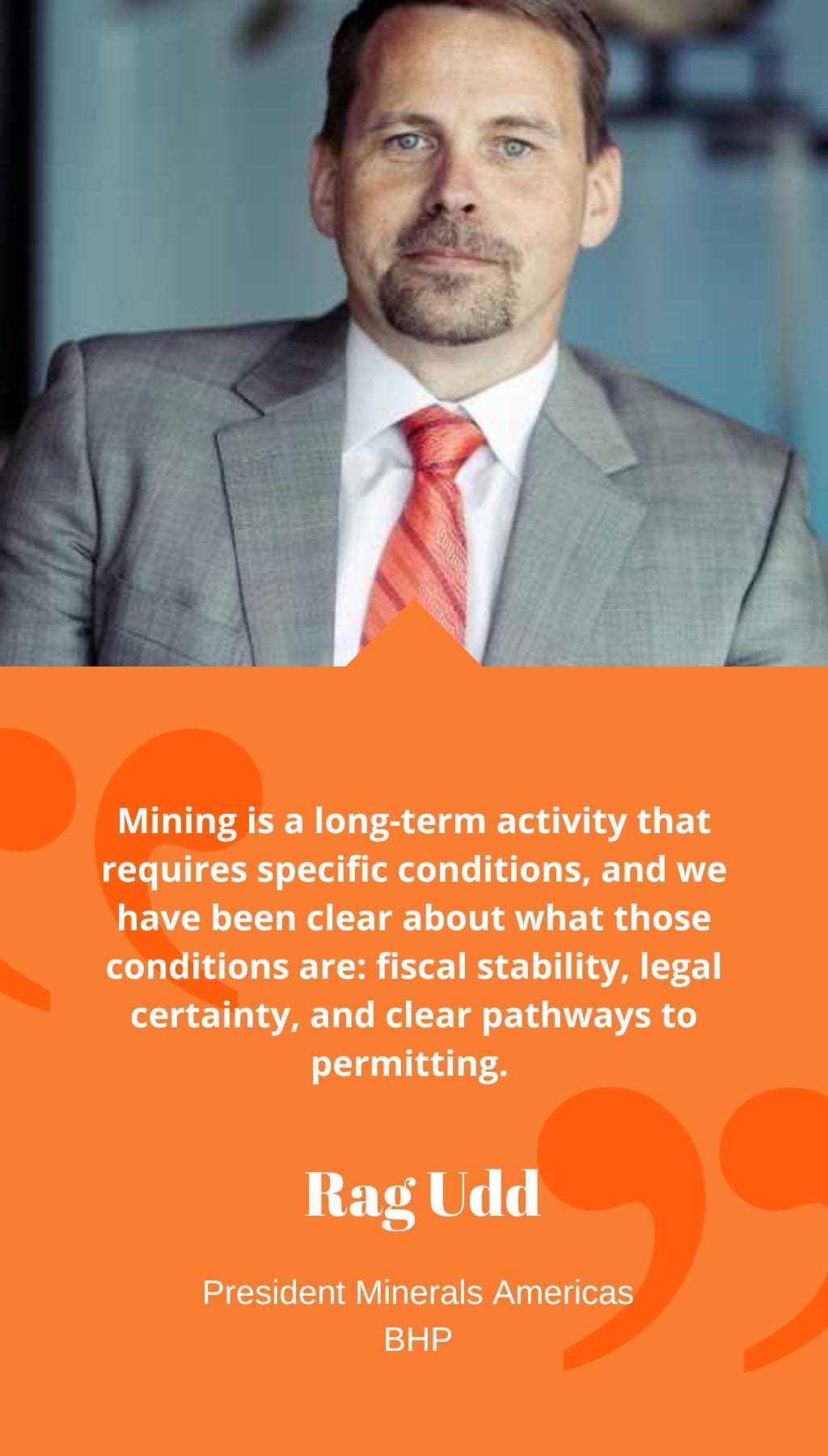
- Chile | 20 May 2022

What have been the main milestones achieved and challenges faced at BHP’s Chilean operations in 2021 and 2022?
The last two years have been incredibly important for BHP in the Americas, particularly in Chile where we have two key commodities in our portfolio: copper and potash. We have increased our exposure to these commodities and strengthened our growth prospects. In terms of our Chilean operations, we have achieved some significant milestones. For example, we recently inaugurated the new concentrator at Spence, which will extend the life of the mine for over 50 years and increase BHP’s contribution to Chile. We have also continued to make progress on our desalination efforts, which started 15 years ago and have allowed us to supply Escondida exclusively with desalinated water and build a new desalination plant in Mejillones to supply Spence. We are on track to be 100% supplied by renewable energy sources by the mid-2020s, and our progress on gender balance is also noteworthy, as we have surpassed the crucial 30% of feminine representation and are on track to reach a gender-balanced workforce by 2025. Our Operating System (BOS) is also an important achievement as it defines a set of principles, practices, and behaviors that make improvement a part of what we do every day. However, COVID-19 has been a major challenge, as it has created disruptions in our supply chain and labor shortages.
At the World Copper Conference in March 2022, you announced that BHP will invest US$10 billion in Chile under the right conditions. What type of conditions would these be, and where would the investment be directed?
Mining is a long-term activity that requires specific conditions, and we have been clear about what those conditions are: fiscal stability, legal certainty, and clear pathways to permitting. We are convinced that the country will provide the conditions for us to materialize the great plans we have for Chile. Under the right conditions, Chile will remain a world leader in copper production. The US$10 billion investment would consider new mining infrastructure, optimizations of our existing assets, non-conventional tailings, building a new concentrator, new leaching processing facilities, developing new mining areas, and investments in decarbonization to reduce Scope 1 emissions ultimately to net zero. The next five years will be crucial for executing these plans.
What progress has BHP made in Chile with regard to its water supply and energy use?
BHP has been a pioneer in desalination in Chile, as we were the first company to build a desalination plant, and we have invested US$4 billion in desalination capacity over the last 15 years. This has enabled Escondida to exclusively use desalinated water and to stop extracting water from Andean aquifers. We also built a desalination plant in the Mejillones Port to supply desalinated water to the new concentrator at Spence. Regarding energy use, we have made significant progress transitioning to renewables.
Can you elaborate on how BHP is eliminating diesel at its operations?
We are developing autonomy programs and pilots in our mines to transition to fully integrated and highly automated assets and value chains. We are collaborating with partners such as Caterpillar or Komatsu to design solutions to electrify our trucks and fleets. We are also searching for disruptive ideas and are always willing to listen to innovative solutions.














